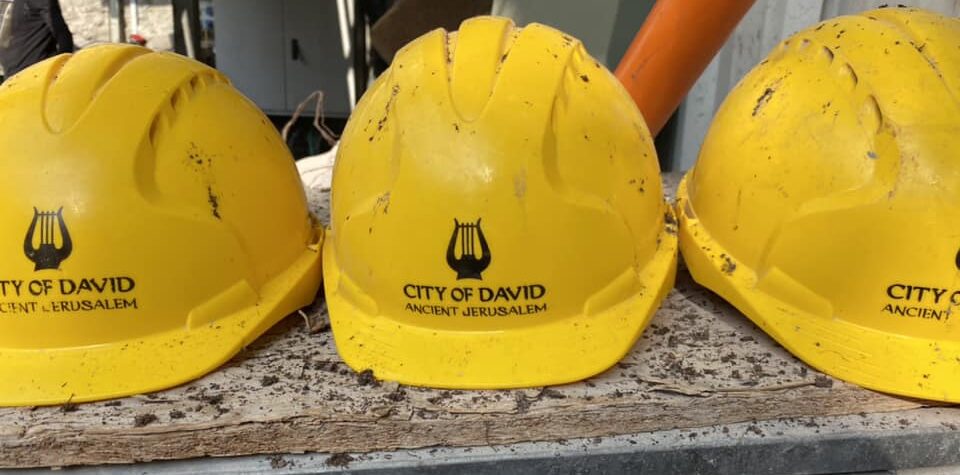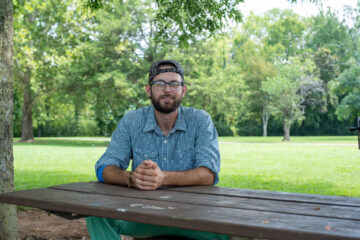2 Samuel verse 11 recounts the beginning of the relationship between King David and Bathsheba. Wouldn’t it have been fascinating if, as part of his plan, David sent a letter to Uriah (Bathsheba’s husband) after he left for battle, so as to provide plausible deniability for Uriah being killed so David could marry Bathsheba? What if that letter was not only never delivered, but if it were found today, complete with King David’s seal, and if it were marked in ancient Hebrew with the phrase “Undeliverable. Return to sender.” Where would David’s letter be returned to?
If such a letter were discovered, it would be just one of numerous archaeological finds in recent decades pointing to the veracity of the Biblical account of King David in specific, and his and the Jewish people’s unbreakable connection to Jerusalem. Until the City of David was discovered some 150 years ago, and excavations began just a few decades ago, people could legitimately point to the lack of actual proof of King David’s existence, making Biblical narrative speculative. Since then, the indisputable proof of all the evidence makes it impossible to refute with any integrity, and casts a cloud of dishonesty on those who would still deny David’s existence, building his kingdom in Jerusalem, and being the center of Jewish life for 3000 years.
The City of David is exactly where King David’s palace existed. That’s where his letter to Uriah would have been written, and be returned to. Standing there, reading the account of his seeing Bathsheba, you can imagine exactly where that took place. In recent decades, the archeological evidence unearthed has been extraordinary. It includes something as mundane as an ancient toilet from which scientists have been able to determine what Jerusalem’s residents ate while under siege. It includes the excavation of the Pilgrim’s Road, upon which millions of Jewish pilgrims walked as they ascended to the Temple. The millions included average Jews coming to fulfill their Biblical obligation, and more famous ones such as Jesus, coming to Jerusalem from all over the Land of Israel. Among the remarkable evidence discovered on the Pilgrim’s Road are first century coins, and a bell from the garment of the High Priest. But there’s much more.
Recently, I asked Ze’ev Orenstein, director of international affairs for the City of David, “What’s new in the ancient City of David?” Other than talking about the continued excavations of the Pilgrims Road, which is not yet open to the public, he shared some fascinating ancient things being newly unveiled in the modern time. Prior to our conversation, I had a private tour with Shira, an outstanding guide, who brought to life what was the original Jerusalem. This included walking along much of the Pilgrim’s Road which is not yet open to the public, and seeing how the excavations are continuing to take place.
Ze’ev shared that in addition to those continued excavations, during the last weeks of 2022, plans were announced to excavate the remaining two-thirds of the Pool of Siloam, a Biblical site significant to Christians and Jews. The Pool of Siloam sits at the lower foot of the Pilgrim’s Road and is the place where the millions would participate in a ritual purification before ascending about half a mile to the Temple itself.
Christians point to the Pool of Siloam as the site at which (according to John 9) Jesus healed a blind man. Indeed, there’s little if anything about the City of David that’s not as significant to Christians as much as it is to Jews. Jesus was a first century Jew and literally walked and worshipped there. Understanding his life and the centrality of the Temple as part of Jewish Biblical history is significant understanding the Jewish roots of Christianity.
Miracles are not uncommon in Jerusalem, but even some seem unbelievable. Ze’ev also shared the miraculous way in which the Pilgrim’s Road was found to begin with: through the bursting of a modern sewage pipe, and excavations to make the necessary repairs.
Affirming the veracity of Jerusalem’s Biblical history is not just a matter of affirming one’s faith, although that is very important. Today, when people don’t know history, or know and deliberately revise history to fit their own narrative, the thousands of years old evidence from the City of David debunks that. Denial of Biblical history in Jerusalem is particularly egregious because it undermines the faith of billions of Jews and Christians. It is also a tactic used by antisemites who deny Israel’s right to exist, who make up and propagate nonsensical thoughts that Jews have no history in or connection to Israel in general, and Jerusalem in specific. This is a narrative often promulgated by Palestinian Arabs, at the UN, and among others, seeking to erase the Jewish people from the Land that God deeded them.
In the City of David, it’s possible to play a Biblical version of connect the dots. One can see landmarks and artifacts that point to numerous Biblical verses, and to historical records by Josephus and others. If one needed a proof text for the Text, the City of David embodies that.
In a few years, 21st century pilgrims will be able to walk the full length of the Pilgrim’s Road, starting at the Pool of Siloam up to the southern steps of the Temple Mount. While not yet able to buy things needed for offerings in the Temple at one of the many shops along the way, this is significant because it affirms Biblical scripture in the exact place in which that took place. It puts undeniable proof of the Biblical account of King David and the connection of the Jewish people to Jerusalem, literally at the feet of everyone. When this happens, it will be the first time in two millennia, since the Romans conquered and destroyed Jerusalem and the Temple, that this path will be open. I want to be there and so should you.
Jonathan Feldstein














